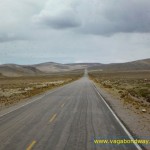Puno, Peru – A Working Class Town
Standing in garbage, I was looking out over what is considered the world’s largest high-altitude navigational lake – Lake Titicaca. The city of Puno, Peru borders the UNESCO World Heritage site of Lake Titicaca and is shared with Bolivia. I am always amazed how some of the coolest things on the planet can possess such a gritty edge. None the less, the city of Puno borders this Peruvian Altiplano and has been declared a Special Economic Development Zone and offers a realistic look into a Peruvian working town.
At an elevation of 3822 meters/12,565 feet, Puno can have shivering nights, yet layer visitors with severe sun burns because of its high levels of sun exposure throughout the day. During high season between July and August, on average at least one tourist is hospitalized with sun burns, especially after falling asleep on a boat tour on the lake. So be warned, as always in high elevations, wear your sunscreen!
So let’s walk these dusty streets and see what this working town of Puno looks like:



























 Previous Post
Previous Post Next Post
Next Post
It’s always sad to see such beautiful areas littered with trash. Overall seems like a nice town in Peru. Nice post with a touch of a down side. Love the video!
Being a border town, Puno embodies that gritty edge. But it is a great base for exploring some really neat things in the area.
Looks like a beautiful city! I love that first picture in your post!
The plaza in the first picture was nice. Puno was a real working class city to spend some time in. Lake Titicaca (coming up next) is one amazing thing to see in the world.
Colorful and captivating story and pictures. I thoroughly enjoyed it, especially the video, nice addition Vagabond!!:) I took a look at the Hostel and the rooms look wonderful with a beautiful view! The breakfast looked amazing too. So glad you posted the hostel pictures and a link.
Thanks! We are trying to start getting some videos out now. The hostal was pretty sweet. We enjoyed staying there.
Looks as though the majority of this working class town is geared to market sales. Thank you for the insight on this culturally rich high altitude city.
Indeed, there is a lot of markets here. We had never seen a market like that Blue Tarp market selling SO many Christmas figurines.
I was not fond of Puno but found the surrounding area totally awesome! Your video is very good and typical of ethnic celebrations in the town.
Yeah, we pretty much felt the same about Puno, unfortunately, which is frustrating to see because it seems like with just a bit of effort it could clean up and be such an attractive town. We saw/heard about some of the things to do in the surrounding area and they seemed awesome. We never did get to hike up the big hill to see their condor statue.
Absolutely wonderful background for the center of town. The surrounding hills are simply marvelous. The local culture is so diverse and I loved them in your video. Thank you.
The road into Puno is pretty neat, you round this corner and just bamm! There’s this big city below and we just gazed out the window as the bus wound its way down the hill. The cool thing about this video, is we just walked by the celebration by chance. That wasn’t listed in Lonely Planet and there were not a bunch of flyers hanging up around town informing people to go there. All the locals just knew that was happening and for a little step in time, we got to stand along side them and enjoy the festivities.